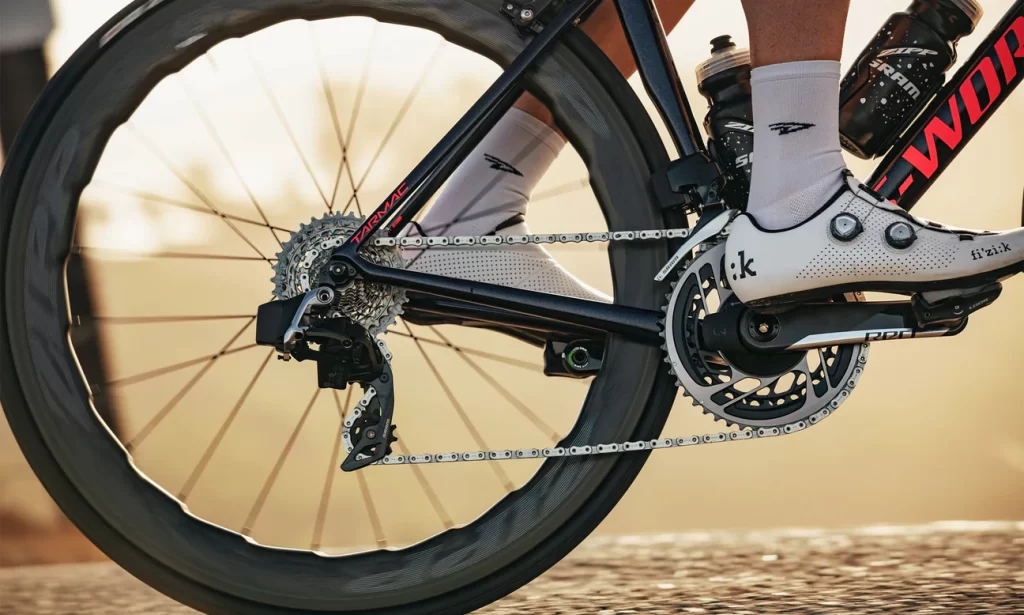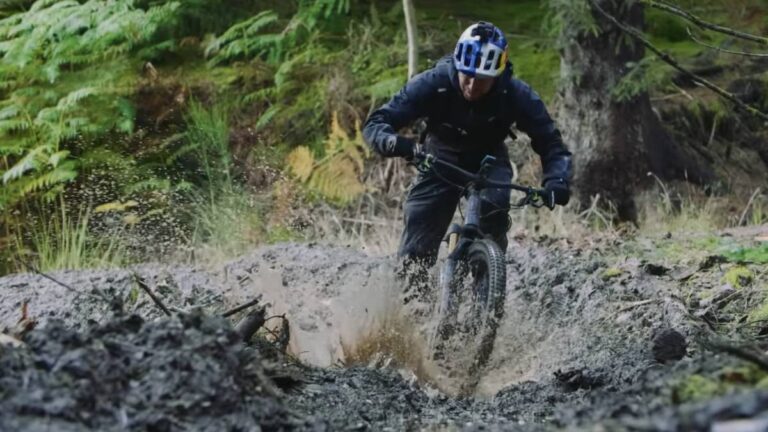Staying Ahead of Wear: A Cyclist’s Guide to Road Bike Tire Wear Indicators

Key Point Summary of Road Bike Tire Wear Indicators:
- Tread Wear: Look for signs of flattening or a squared-off tread, indicating significant wear.
- Wear Indicators: Some tires feature wear indicators, such as small holes or sipes, that disappear when it’s time to replace the tire.
- Cuts and Gashes: Inspect for deep cuts, gashes, or exposed casing, which compromise tire integrity.
- Sidewall Damage: Check for cracks, cuts, or significant wear on the tire sidewalls.
- Frequent Flats: An increase in punctures can suggest the tire is worn out and more susceptible to damage.
Understanding when to replace road bike tires is crucial for maintaining optimal performance and safety on your rides. As a masters cyclist with extensive experience across various cycling disciplines, I’ve learned the importance of recognizing the signs of tire wear.
This knowledge not only ensures a smoother ride but also guards against unexpected flats and accidents. Here, I aim to share insights on road bike tire wear indicators, helping cyclists from beginners to mid-level to identify when it’s time for a tire replacement.

Recognizing Tire Wear
The lifespan of a road bike tire can vary significantly based on riding style, conditions, and the tire’s construction. Knowing how to identify wear is essential for timely replacements.
Tread Wear
One of the most straightforward indicators of tire wear is the condition of the tread. Over time, the tread will wear down from a rounded profile to a more flattened or squared-off shape. This change can affect the tire’s grip and handling, especially noticeable when cornering.
Wear Indicators
Manufacturers often include wear indicators in the tire design. These can be small holes or sipes in the tread that fade over time. Once these indicators become difficult to see or disappear entirely, it’s a clear sign that the tire needs replacing.
Cuts and Gashes
Regular inspections can reveal cuts or gashes in the tread or sidewall. While minor abrasions are typical, deep cuts or any sign of the casing material can significantly increase the risk of a blowout.
Sidewall Damage
The sidewalls can also show signs of wear through cracks or visible fabric. Exposure to the elements, particularly UV light, can cause the rubber to deteriorate, compromising tire integrity.

Frequent Flats
If you’re experiencing more punctures than usual, it could be due to the thinning of the tire’s rubber, making it more prone to flats. This increase in punctures is a strong indication that the tire’s protective layer has worn down.
Final Thoughts
For cyclists, especially those venturing into longer rides or more challenging terrains, understanding and monitoring tire wear is a skill as crucial as any other maintenance task. Regular checks, combined with an awareness of wear indicators, can extend the life of your tires and ensure you’re riding safely.
Tires are your only contact point with the road, and their condition directly influences your ride’s quality and safety. Making timely replacements not only preserves your ride comfort but could also prevent accidents.
One of the most robust road bike tires known for its durability, puncture resistance, and longevity is the Continental Grand Prix 4-Season. Designed to handle harsh conditions and provide reliable performance year-round, this tire incorporates Continental’s DuraSkin and Vectran technologies. DuraSkin offers sidewall protection against cuts and abrasions, while Vectran is a high-tech fiber used in the tire’s construction to prevent punctures without compromising the tire’s weight or rolling resistance.

The Grand Prix 4-Season is favored by cyclists who ride in a variety of weather conditions and on mixed surfaces, requiring a tire that can withstand a lot without sacrificing performance.
FAQ
How do I know if my road bike tyres are worn?
Check for a squared-off tread instead of the original rounded profile, look for visible cuts, gashes, or threads, and notice any significant decrease in performance or increase in flats.
Do bike tires have wear indicators?
Yes, some bike tires have wear indicators, such as small dimples, holes, or sipes in the tread that fade away as the tire wears down.
How do I know when to replace my road bike tyres?
Replace your tires when wear indicators are gone, the tread is visibly worn or squared-off, you see cuts exposing the casing, or you experience frequent punctures.
How many kms do road bike tyres last?
The lifespan varies depending on the tire type, usage, and conditions, but on average, road bike tires can last between 1,500 to 3,000 kilometers. High-endurance tires may last longer, while racing tires might wear out quicker.
Happy Cycling!
John






